By Patrick Colbeck
Should we trust our election results?
Before your answer that question, answer the following question.
Did you know that elections all across America are being certified on the basis of election results provided by vote tabulation machines which have never been tested?
Don’t get me wrong. There is plenty of testing of vote tabulation machines going on just not testing of the machines responsible for the final election results.
Did you know that are multiple gaps in the audit trail between the scanning of your ballot by electronic vote tabulators and the posting of election results?
The level of trust expected of citizens is much more significant than you may have been lead to believe. In this post, we will perform a deep dive into exactly how much trust you are expected to have in our election system.
Before we explore our required trust levels, it is important to review what is known about the processing of election results with today’s modern electronic voting systems.
Examination of Election Results Chain of Custody
No other election record is more important the the election results. Our elected officials and ballot measures are all certified on the basis of these records, yet how much do you really know about how these election results are generated?
It is time to explore how these results are generated in the era of electronic voting systems. The following diagram is an attempt to summarize the process by which our vote tallies proceed from precinct-specific vote tallies to final aggregation of these precinct-based results into the overall results for a given race or ballot measure. For the purpose of this discussion, I will focus upon election results transfers using the Dominion Voting System. In Michigan, this system is used in 65 out of 83 counties including large population centers such as Wayne County, the home of Detroit.

There can be significant variation in this process from community to community. Some communities do not have AVCB’s. Some communities have AVCB’s paired with a single precinct. Some communities have AVCB’s responsible for tabulating votes across multiple precincts. Some communities use electronic adjudication workstations to resolve errata on absentee ballots while others use a manual spoil and duplicate process. Some communities aggregate their results in an EMS Server before transferring their results to the county. Some communities rely upon the county to perform the election results aggregation with an EMS Server. Regardless of these variations, the starting point and the end point are the same. It all starts with precinct-based election results and ends with a summation of these precinct results that determines the winner of a given contest. What happens in between underscores the importance of the precinct-level results integrity and the importance of the chain of custody in the transfer of these results from machine to machine leading up to their final tally.
The integrity of precinct-level tabulation results are the fundamental building blocks for all downstream tabulation efforts. In counties that use Dominion Voting Systems, precinct-level tabulations are performed by both ImageCast Precinct (ICP) and ImageCast Central (ICC) tabulators. If these precinct-level records are compromised, so are the overall election results. These devices are not the only devices which tabulate votes, however. There are also Adjudication Workstations, Results Transfer Managers (RTM), and Election Management System (EMS) Servers which perform vote tabulation functions. As with any chain of custody discussion, the integrity of a chain is only as good as its weakest link. With this in mind, let’s take a closer look at all of these links in the election record chain of custody.
In-Precinct Tabulation
ICP vote tabulators are used in support of in-person voting. Each precinct is equipped with an ICP tabulator.
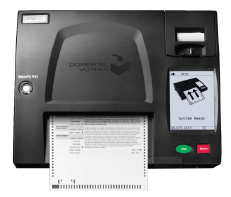
SOURCE: Dominion Contract with the State of Michigan
The key components of these tabulators are listed below.
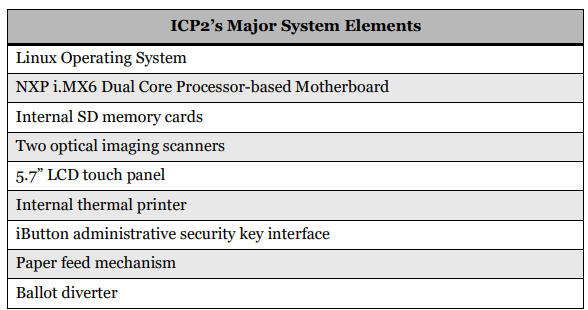
SOURCE: Democracy Suite Use Procedures Version 5.10-CA::11 January 15, 2020
Precinct-specific results are printed on the thermal printer included with the ICP. These printouts are provided in support of Public Accuracy Tests and Election Day Operations. Typically a “zero tape” is printed before tabulation and a “results tape” is printed out after the precinct tabulation has been closed. These tapes are important components of the vote tally audit trail. Printouts obtained by poll observers on election night can be checked against any precinct-specific election results reported at the municipal, county or even state level. There should be no deviation between what these downstream vote tallies show and what the precinct-results on election night show.
Absentee Voter Counting Board (AVCB) Tabulation
ICC vote tabulators are used in support of AVCB operations. Unlike ICP tabulators which scan one ballot at a time, ICC tabulators feature high speed scanners capable of scanning ballots typically in batches of 50 or more.

SOURCE: Dominion Contract with State of Michigan
Unlike ICP tabulators, ICC tabulators are often configured to scan ballots across multiple precincts. The subsequent tabulations of votes resulting from these scans are captured in “Results” files.

Unlike ICP tabulators which print precinct-specific zero tapes and closing tapes that can be viewed by poll observers, ICC tabulators store this information in a Results file that is not visible to poll observers on election night.

During the 2022 general election, poll challengers at the Detroit Absentee Voter Counting Board (AVCB) asked to see the zero tapes and closing tapes for the 24 ICC tabulators used in support of the election. They were told that could not see them. The reason for this becomes apparent upon review of the following ICC component list.

SOURCE: Democracy Suite Use Procedures Version 5.10-CA::11 January 15, 2020
Note the lack of a printer in the list of ICC components. Results must be transferred to a machine with EMS Server software before a report formatted to show election results by precinct can be printed. This means that there are no precinct-specific vote tallies available for ICC tabulators on election night to demonstrate the status of these vote tallies prior to the aggregation of these results by other electronic voting system components. The lack of precinct-specific vote tallies for each ICC tabulator removes a key reference point in the vote tally audit trail as it enables downstream voting systems to manipulate the precinct-specific results without any election night reference point.
Adjudication Tabulation (Optional)
One of these downstream components is often referred to as an Adjudication workstation. As alluded to earlier, not all communities perform electronic adjudication. Adjudication workstations are simply desktop computers featuring the installation of EMS Express software. They are typically connected to one or more ICC tabulators via ethernet connections as part of a Local Area Network (LAN). For the purpose of this analysis, please assume that these adjudication workstations have the same capabilities and functions as an EMS Server.
Results Transfer Manager (RTM) Tabulation
While election observers tend to focus upon the operation of the ICP and ICC tabulators. I would submit that Results Transfer Manager (RTM) workstations merit significant attention as well. An RTM workstations is simply a laptop featuring the installation of Dominion Results Transfer Manager (RTM) software.
RTM laptops are used in AVCB environments featuring multiple ICC tabulators. They aggregate election results data from multiple ICC Tabulators and transfer Results files to the Democracy Suite EMS Server as well as “shared folders on a network”.

SOURCE: Dominion Contract with State of Michigan

SOURCE: Dominion Contract with State of Michigan

SOURCE: Dominion Contract with the State of Michigan
It should be noted that in addition to transferring election results from ICC tabulators to an EMS Server, the RTM workstation is capable of transmitting “data to shared folders on a network”. The purpose of this capability is unclear but it suggests that the data from ICC tabulators is being shared with more entities than simply the EMS server.
Let’s take Dominion up on their recommendation to examine the EMS Results Transfer Manager User’s Guide in order to have a better understanding of the capabilities of the EMS Results Transfer Manager.

There are a couple of key takeaways from this section of the users guide:
- EMS only provides aggregate results
- RTR users have the ability to “manually enter results for any of the defined tabulators in the system“.
These features not only confirm that the RTM software does “aggregate” (i.e. tabulate) results, it also confirms the need for a public audit trail governing any modifications of these results. Since ballot images are also among the data sets imported by the RTM software, they should be able to provide at least some degree of an audit trail…or do they?
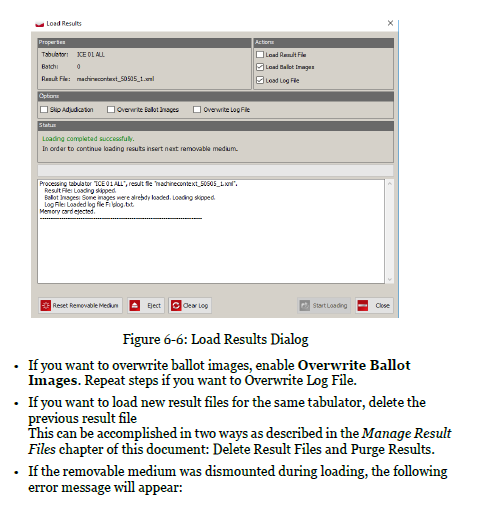
Please note that the RTR module enables users to “overwrite ballot images” and “overwrite log files“. Such capabilities destroy any audit trail.
Why would someone want to destroy an audit trail for election results? Perhaps because of this next capability.
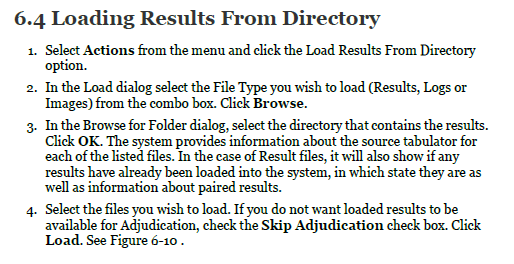
This software feature would come in very handy if you already had the results files you like and wish to overwrite the ACTUAL results with your preferred results…all without an audit trail.
Despite providing “aggregate results” it is important to note that RTM laptops are NEVER subjected to public accuracy tests to ensure that these aggregations are accurate.
Election Management System (EMS) Server Tabulation
The EMS Server is used to aggregate election results from ICP and ICC tabulators in a given jurisdiction. As pointed out earlier, EMS servers could be deployed at the municipal, county or even state level.

SOURCE: Dominion Contract with State of Michigan
Please note that “the EMS Results Tally and Reporting (RTR) Module is used on Election Night upon close of polls to accumulate results from tabulators and generate results reports”.
Once the results have been transferred to the EMS Server, precinct-specific reports such as the one highlighted below are possible.
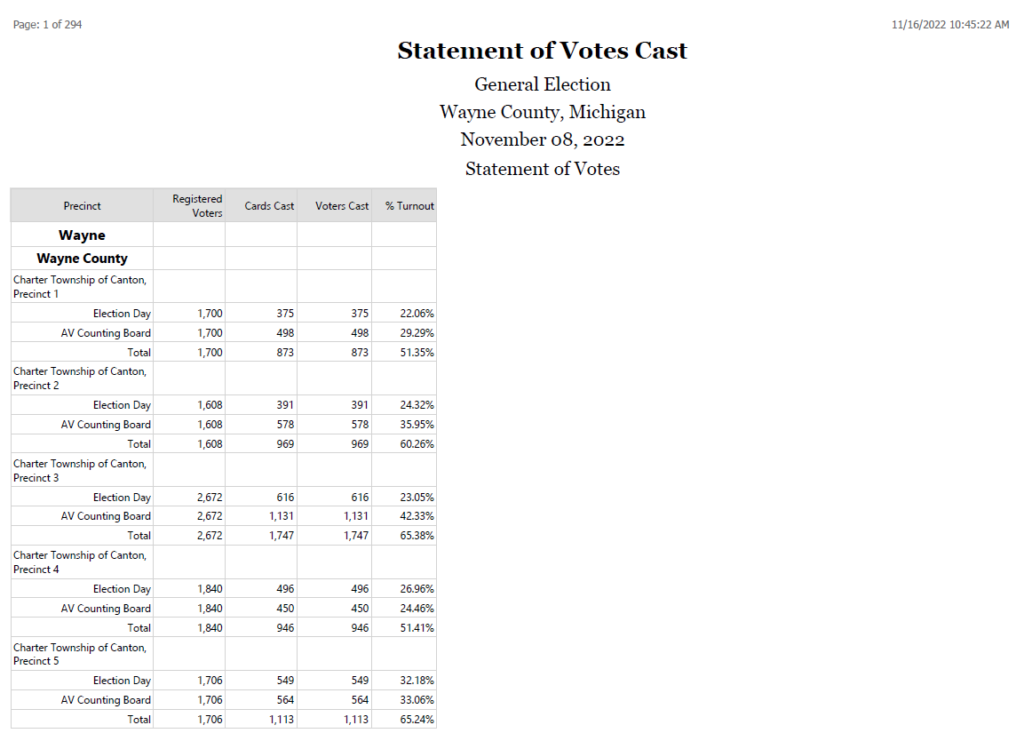
SOURCE: Canton Township
In lieu of an ICC report of election results by precinct, this is an example of the EMS-generated report used by canvassers to certify the election results. Despite its role in “accumulating results” it is important to note that EMS servers are NEVER subjected to public accuracy tests to ensure that these aggregations are accurate.
Media Reporting
I would love to delve into a detailed discussion of the election results communicated by the media on election night. Because this discussion will quickly lead down a rabbit hole that detracts from the core conclusions of this post, I will save a discussion of media election result reports for another post but I encourage you to investigate how media gets their election night information.
The general public deserves to know the sources of the data used by the media to project winners and losers. Publicly available data points to two sources for the media’s election night data – AP and Edison Research.

An examination of the chain of custody for media election night results data would likely shed some light on live vote flips, strange vote dumps and other vote tally anomalies worthy of investigation.
Missing Links Which Subvert Trust in Election Results
Unlike physical hand-counting of ballots, electronic tabulators do their counting hidden from public view. In fact most electronic voting system vendors have provisions within their contracts with the government that prohibit the public from seeing how they tabulate votes. This translates to a need for citizens to trust that the safeguards in place to secure our vote are effective. Is this trust warranted?
Let’s find out what level of trust is truly required in order for us to believe the results of our elections. Upon review of the concerns that I have, I’ll leave it to you to conclude whether or not trust in our election results is warranted.
Missing Link #1: Equipment certification
The first trust walk citizens must take in any election involving electronic voting systems pertains to equipment certification. Certification typically involves analysis, demonstration and testing of a voting system against some prescribed requirements standard.
Did you know that under Michigan law (MCL 168.795a), an electronic voting system vendor is allowed to certify that their system meets or exceeds the state performance and test standards?
Before any electronic voting system can be used in support of election operations in Michigan, it must be approved by the State Board of Canvassers. In this light, there is a theoretical safeguard against the risks inherent with allowing vendors to certify their own systems. In reality, however, most members of the State Board of Canvassers lack the technical knowledge to effectively evaluate compliance of electronic voting systems with state requirements. To compound matters, there is a notable lack of public information available on the standards used by the State Board of Canvassers as the basis of their electronic voting system approvals.
In contrast to state certification efforts, the Federal Election Assistance Commission (EAC) has posted their approved configurations and certification standards online. A cursory review of these standards indicates that even the federal government standards are of insufficient rigor to safeguard the security of what has been designed a Critical Infrastructure Component for our nation. As a minimum, a Failure Modes and Effects Analysis down to the microchip level should be conducted to mitigate any security risks and ensure the effective operation of our election system.
During its July 21, 2022 meeting the Michigan State Board of Canvassers approved what were conveyed as minor changes to Dominion Voting Systems v5.5/5.5S for use in Michigan elections. The scope of these minor changes and the testing that was performed in order to obtain this approval is not known to the general public. It is worth noting that MCL 168.795a allows for voting equipment manufacturers to certify their own systems. The version of Dominion voting system used in Michigan per documentation associated with public accuracy tests was v5.5.3. Nowhere is there any public documentation available as to what software or hardware is part of the v5.5.3 configuration.
Without transparent disclosure of the certification standards used as the basis for any approval of an electronic voting system, it is very difficult to have any confidence that it was sufficient to protect the integrity of our vote.
Missing Link #2: Logic and Accuracy Testing Rigor
Our next step in the election results trust walk gets to the core of our assessment of any election – Are the election results accurate?
In order to answer this question, we need to examine how electronic voting systems are tested for logic and accuracy testing before each election. Equipment certification ostensibly verifies that the system software and hardware is capable of providing accurate and secure election operations. Every election is unique, however. It has unique candidates and ballot measures requiring unique configuration of the software for each election. Therefore, prior to use in a specific election, logic and accuracy testing must be performed on all electronic voting systems.
To get a better understanding of the rigor applied to logic and accuracy testing before an election, let’s use the City of Detroit as an example. In Detroit, there were 502 precincts assigned to 149 counting boards. Each counting board featured between 1 and 6 precincts. Each precinct featured an in-person voting location. Each of these voting locations was equipped with a Dominion ImageCast Precinct (ICP) Tabulator. In order to process Absentee Ballots, the City of Detroit created a massive Absentee Voter Counting Board at a facility called the Huntington Center. This facility was broken down into 149 separate counting boards. The ballots from these Counting Boards were assigned to 24 Tabulator workstations for scanning and tabulation. Each tabulator workstation featured a Dominion ImageCast Central tabulator. This equates to an average of 21 precincts assigned to each tabulator. Detroit is one of those communities which use adjudication workstations. 12 Adjudication workstations were connected via LAN to the 24 tabulator workstations. These adjudication workstations also tabulate election results based upon adjudicated scanned images provided by varying counting board tabulator workstations. Each adjudicator workstation would have been responsible for an average of 42 precincts.
Under MCL 168.798, electronic tabulating equipment must be tested to determine if it will accurately count the votes. These test results for the 2022 general election have yet to be published. The test results for the 2022 primary election provide an indication of the level of rigor applied to this requirement for determining the accuracy of electronic tabulation equipment:
- Out of the 450 ICP tabulators in use during the primary, only 14 were tested during public accuracy test. According to Detroit election officials, 0 of the tabulators tested were actually in operation at the precincts.
- Out of the 24 ICC tabulators in used during the primary, only 1 was tested (See figure below) and that was only tested for one precinct. Each ICC tabulator at the Detroit AVCB was responsible for scanning ballots for at an average of 19 precincts. According to Detroit election officials, 0 of the tabulators tested were deployed in support of election operations.
- 0 adjudication workstations were tested.
Samples of the Public Accuracy Test results from the 2022 Primary Election in Detroit can be seen in the following figures:
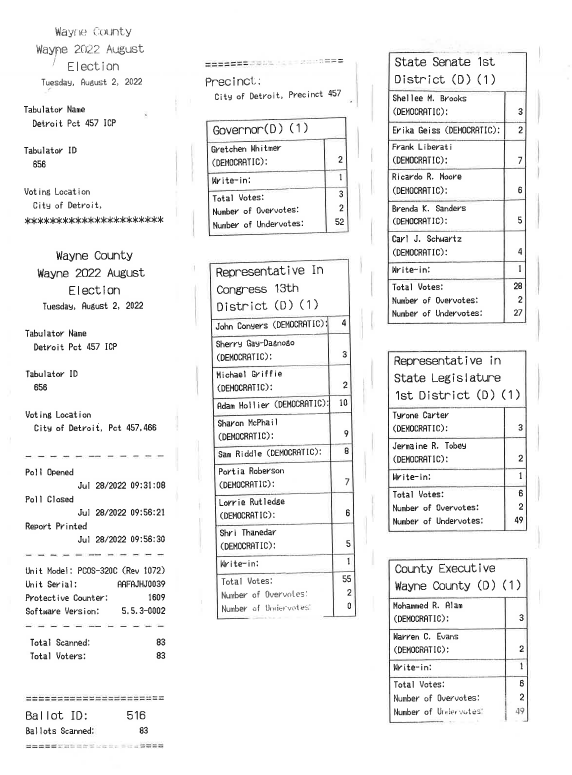

It is difficult to conclude from this “rigor” that logic and accuracy tests in municipalities such as Detroit are anything but a haphazard dog and pony show.
Missing Link #3: Tabulators Never Tested for Accuracy
The next step in our trust walk that I would like to highlight pertains to whether or not all of the electronic voting system components which tabulate votes have been tested for accuracy. We have evidence to suggest that there is at least an attempt to test the accuracy of ICP and ICC tabulators, but are they the only electronic tabulators which merit the need for logic and accuracy testing? No.
We know from our review of the election results chain of custody that the Results Transfer Manager (RTM) workstation and Election Management System (EMS) server both perform tabulation functions yet there are never any election-specific tests performed to ensure that their tabulation calculations are accurate.
Why should this concern you? Two reasons come to mind.
Reason #1: Antrim County
EMS tabulation errors were at the heart of the 7,060 vote flip experienced in Antrim County, MI during the 2020 election.
Reason #2: Certification of Election Results
Because there are no precinct-level ICC reports of election results, EMS servers actually provide the precinct-level election results reports used by canvassers when they certify the results of any election. Remember, this data passes through the RTM workstation before reaching the EMS Server.
In this light, is it reasonable to trust the certification of our election results to reports provided by tabulation equipment which has not been tested for accuracy?
Missing Link #4: Precinct-Level Results
Our next step in our election results trust walk focuses upon the fundamental building block of all election results reporting – precinct-level election results. If the precinct-level election results have been compromised, the election results for all ballot measures based upon these results are compromised. That’s why it is critical to have an audit trail that validates the integrity of precinct-level election results. The most important facet of this audit trail is to obtain copies of the precinct-level tabulator results before those results are transferred to other electronic devices.
We’ve already seen examples of the election results reports that can be generated by ICP and ICC tabulators. Here is a closer look at what one could expect from an ICP precinct results report. It provides a timestamp and clear indication of the election results for each race for the pertinent precinct.

The ICC precinct results report is a different matter. A closer examination of these reports reveals something very concerning to anyone seeking to know the precinct-level election results from each tabulator on election night. Most ICC tabulators tabulate the results for multiple precincts. The report below clearly delineates the number of ballots scanned by precinct. That’s good.

What it doesn’t show, however, is the election results broken out by precinct. It only provides an aggregate of the election results across all of the precincts. That makes it impossible to know the total votes by precinct for a given race for each election on election night. Since MCL 168.807 requires election officials to provide election results by precinct to anyone who asks for them upon closing of the precinct, any AVCB which features ICC tabulators responsible for tabulating votes for multiple precincts not only makes it difficult to know the complete election results by precinct on election night, it stands in violation of Michigan election law.
Missing Link #5: No Audit Trail
Our last excursion in our election results trust walk addresses whether or not there is a reasonable audit trail at all in the electronic voting systems used in Michigan. Under MCL 168.795, electronic voting equipment used to support elections in Michigan must provide an audit trail. As you may have guessed upon examination of the components involved in the transfer of election results, there are significant issues with audit trails in Michigan’s election system.
RTM workstations provide the explicit ability to overwrite ballot images and log files.

Election results are transferred via internet connections that compromise the integrity of data transfers and expose other components of the electronic voting system to malware. The Michigan Election Security Advisory Commission has recommended banning the transmission of unofficial election results. This recommendation has been given lip service but that’s about it. There is no apparent audit trail for unofficial reporting.
Illusory provisions in electronic voting system vendor contracts with the State of Michigan have been used to prohibit examination of audit trail records under the premise that system logs and data files are proprietary data.
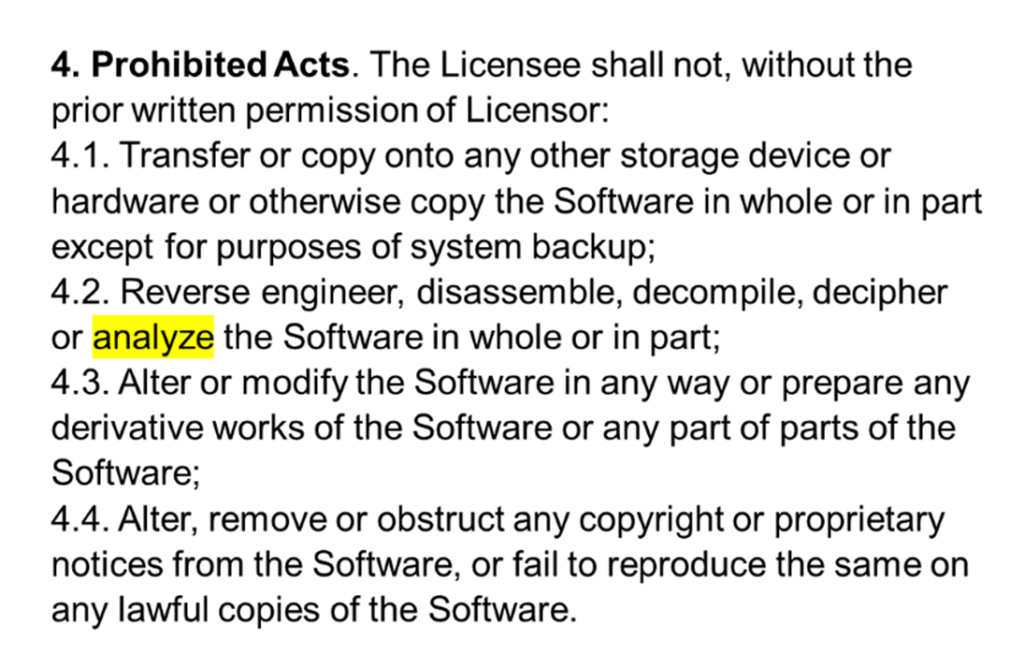
The Michigan Secretary of State has issued orders to destroy poll book data and tabulator flash drives immediately upon certification of election results. This information covers what is probably the most important data needed for any professional audit of the election. Why order its destruction?
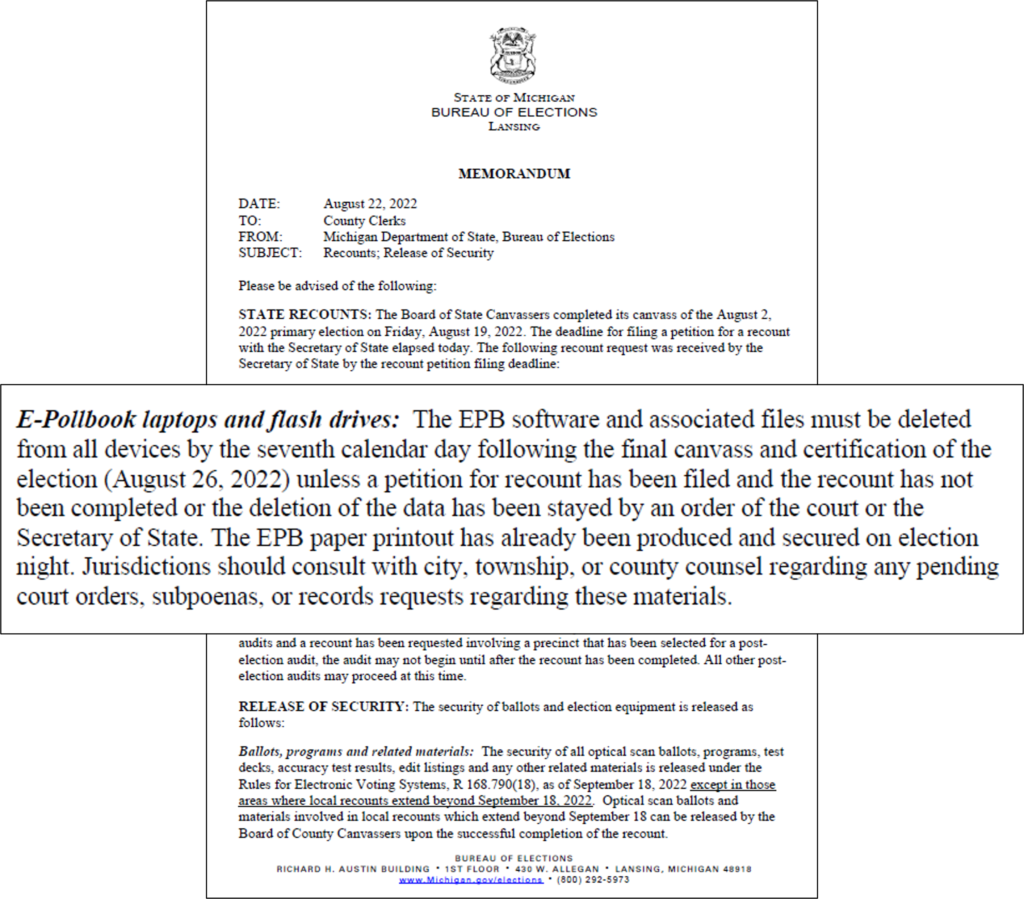
Furthermore, the Michigan Secretary of State has defined audit standards of insufficient rigor to perform a meaningful audit of the election record chain of custody.
Overall, not a very satisfactory state of affairs when it comes to trusting our election results.
What Are Risks?
The core risk is that the integrity of our election results has been compromised.
During the 2022 election, 4,485,779 ballots were cast. The tabulation of the votes on each of these ballots is at risk of manipulation due to the equipment certification as well as logic and accuracy testing shortfalls identified. Due to the audit trail risks identified, absentee ballots are subject to elevated risks of manipulation due to the missing links in the audit trail. There were approximately 2,000,000 absentee ballots cast that are subject to this elevated risk…more than enough to impact the results of every single 2022 statewide ballot measure. And because these risks pertain to the operation of electronic voting systems not subject to meaningful observation, even the most honest clerks and poll workers could preside over a fraudulent election without even knowing it.
Sadly, there is a significant body of evidence including several court rulings that indicate that the Michigan Secretary of State has taken measures to deliberately create and expand weaknesses in our election system.
As demonstrated in this post, the Secretary of State is in a unique position to subvert the integrity of our election systems.
- SoS defines certification standards and procurement requirements for electronic voting systems.
- SoS defines the logic and accuracy test standards for electronic voting systems.
- SoS defines the audit standards for elections.
What happens when the goal of the SoS is to create and expand weaknesses in our election system in order to rig the system?
- Certification standards do not identify and mitigate key risks to the accuracy and integrity of an election.
- Procurement contracts feature provisions that prevent meaningful investigations into the operation of electronic voting equipment.
- Logic and accuracy tests feature insufficient testing to ensure the accuracy of ballot tabulations.
- Audit standards have insufficient rigor to demonstrate the integrity of records used to certify election results
How could these weaknesses be exploited?
- Voting system vendors:
- Tabulator equipment could be configured by vendors to flip votes
- Many contracts prohibit any analysis of these configurations by anyone other a carefully selected set of organizations that may in turn be compromised
- Remote actors:
- Despite the recommendation of a 2020 report by the Michigan Election Security Advisory Commission to eliminate internet-based reported of election results, election results continue to be reported via the internet to this day.
- Tabulator equipment connected to the internet or connected to devices on a local network that are in turn connected to the internet are vulnerable to the insertion of malware
- Malware could be used to flip votes, change ballot images, provide early results in support of ballot trafficking activities, or even add/subtract votes.
- Internet connections do not need to be active during the election to be of concern. Active internet connections before or after the election can be used to compromise the integrity of election records.
- Connecting precinct-level equipment to the internet is of particular concern as it compromises the integrity of the fundamental building block of our elections – precinct-level election results. If the precinct-level results are secured, subsequent aggregations of election results can be communicated via the internet without concern due to the ability to always check those results against the sum of the pertinent precinct-based results.
Whenever these electronic voting system concerns are raised, detractors immediately respond by citing the ability of recounts to eliminate these concerns. Recounts are indeed a valid method of testing the accuracy of the tabulation of electronic voting systems. It is important to note, though, that recounts are only meaningful if the chain of custody for paper ballots has been demonstrated and secured. In Maricopa County, AZ for example, there is evidence to suggest that the ballots subjected to recount were swapped out prior to public recount. Recounts also do not address the risk that the ballots being recounted were not cast by an eligible voter.
What Should Be Done?
The public needs to call for the following actions by state government officials:
- Revise electronic voting system contracts to enable the public to monitor the tabulation of the vote by electronic tabulators.
- Publish the certification standards used by each state to certify electronic voting systems. Ensure that ALL system components which tabulate election results in any way are subject to testing and rigorous configuration control.
- Prohibit the use of internet connections for any precinct-based vote tabulation equipment.
- Eliminate the ability of voting system vendors to certify their own equipment.
- Ensure the certifications standards for electronic voting systems reflect the fact that our election system is a Critical Infrastructure Component of our nation.
- Revise logic and accuracy tests to require a test deck spectrum sufficient to ensure the accuracy of tabulations for all precincts and races.
- Preserve election records needed to support a full forensic audit of the election especially poll book data and tabulation flash drives
- Revise audit standards to ensure that the physical and digital chain of custody for key election records (statewide voter registration file, poll books, ballots and vote tallies) are examined.
- Conduct a full forensic audit of the 2022 election immediately before any records needed for an audit are destroyed.
Conclusion
There is significant justification for a lack of trust in our certified election results. There are at least five significant missing links in the audit trail needed to have confidence in our election results. These missing links are summarized below.

Perhaps one of the most concerning “missing links” pertains to the fact that elections are being certified on the basis of election results provided by electronic tabulators which have never been tested for accuracy. An estimated 2,000,000 votes in the 2022 election were “certified” on the basis of records that were missing significant links in their audit trail. The lack of an audit trail for the results used to certify the 2022 election provides significant justification for the launch of a full forensic audit of the election results.
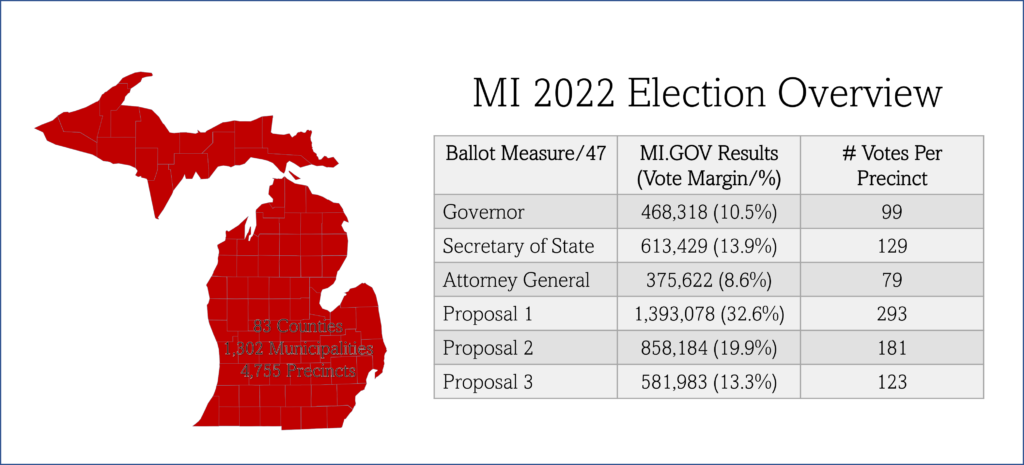
If election officials want so-called “election deniers” like me to have confidence in the accuracy of the election results, we need to see a professional, transparent audit of the entire election record chain of custody including the full chain of custody for our election results.
My Math 116 professor once gave me an “F” on a Trig exam despite having all of the correct answers. When I visited him during office hours to ask why he did this, he said “you didn’t show your work”. I proceeded to show him the math that I did in my head during the exam and he begrudgingly gave me an “A”. It is about time for election officials who claim that our elections are secure to “show us your work”.
Related Posts
- Election Certification Overview
- Beware of “Just Count the Ballots” Narrative
- Let’s Audit the MI Auditor General Report on Elections
- Election System “Air Gap” Myths
- How Do Counties Roll-up Votes from Precincts?



Hello! I could have sworn I’ve been to this site before
but after checking through some of the post I realized it’s
new to me. Anyways, I’m definitely delighted I found it and I’ll be
bookmarking and checking back often! https://www.chordie.com/forum/profile.php?id=1454941
This design is steller! You obviously know how to keep a reader entertained.
Between your wit and your videos, I was almost moved to start my own blog (well, almost…HaHa!) Excellent
job. I really loved what you had to say, and more than that, how
you presented it. Too cool! https://rabbitroom.com/members/laser444/
I just like the valuable information you provide
in your articles. I’ll bookmark your blog and take a
look at again right here frequently. I’m fairly certain I will be told lots of new
stuff right here! Good luck for the next! https://www.provenexpert.com/vape222/
An impressive share! I’ve just forwarded this onto a friend who had been doing
a little research on this. And he in fact ordered me
lunch because I stumbled upon it for him… lol. So let me reword this….
Thanks for the meal!! But yeah, thanx for spending the time to discuss this topic here on your web site. https://botdb.win/wiki/User:Vape222
Thanks for every other magnificent post.
Where else may just anyone get that type of information in such
an ideal way of writing? I’ve a presentation subsequent week, and I am at the search for such info. http://zintro.com/profile/zi5691f998
This is the perfect blog for anyone who would like to find out about this topic.
You know so much its almost hard to argue with you (not that I personally would want to…HaHa).
You definitely put a brand new spin on a
topic that’s been written about for decades.
Great stuff, just wonderful! https://elearnportal.science/wiki/User:Vape222
Truly no matter if someone doesn’t be aware of then its up to other visitors that they
will help, so here it takes place. https://clinfowiki.win/wiki/User:Vape222
It’s genuinely very complex in this full of activity life to
listen news on TV, therefore I only use the web for that purpose, and obtain the hottest information. https://fakenews.win/wiki/User:Vape222
I read this paragraph completely concerning the difference of latest
and preceding technologies, it’s amazing article. https://myemotion.faith/wiki/User:Vape222
I don’t even know the way I stopped up right here,
however I thought this put up used to be great. I don’t understand who you’re however definitely you’re going to a famous blogger in the event you are not
already. Cheers! http://phillipsservices.net/UserProfile/tabid/43/userId/176852/Default.aspx
Let me just get straight to the point; I saw your blog and I think you would be a great fit for our company :-). We are currently paying upwards of $70/hour for English translators. We are looking for people who are reliable, hardworking, and willing to work long-term. English fluency is preferred, and I don’t think you should have any problems with this requirement. We are an online based company from North Carolina. Interested? Apply here: https://msha.ke/freedomwithtay
Waiting patiently for you to come home and fuck me! https://bit.ly/3UIKI2R
Waiting patiently for you to come home and fuck me! https://bit.ly/3UIKI2R
One more thing. I really believe that there are several travel insurance web pages of reputable companies than enable you to enter your journey details and find you the estimates. You can also purchase the particular international holiday insurance policy online by using your credit card. Everything you should do is to enter your own travel information and you can start to see the plans side-by-side. Just find the plan that suits your finances and needs after which it use your credit card to buy that. Travel insurance on the internet is a good way to check for a dependable company for international holiday insurance. Thanks for expressing your ideas.
Wow, superb blog structure! How lengthy have you ever been running a blog for?
you make running a blog look easy. The overall glance of your web site is fantastic, let alone the content material! https://www.instapaper.com/p/11523295/3
I’m not that much of a online reader to be honest but your sites really nice, keep it up!
I’ll go ahead and bookmark your site to come back later on. Cheers https://www.instapaper.com/p/11523295/4
It’s appropriate time to make a few plans for the longer term and it’s time to be happy.
I’ve learn this post and if I could I want to recommend you some attention-grabbing things
or advice. Perhaps you can write subsequent articles referring to this article.
I desire to read more issues about it! https://www.instapaper.com/p/11523295/5
Your mode of explaining the whole thing in this article is actually nice, all be able to effortlessly
be aware of it, Thanks a lot. https://www.instapaper.com/p/11523295/2
[…] *MI ELECTION RESULTS SHOULD NOT BE CERTIFIED […]
I really like your writing style, fantastic information, regards for putting up : D.
A few things i have generally told folks is that when searching for a good on-line electronics shop, there are a few issues that you have to take into account. First and foremost, you should make sure to find a reputable and in addition, reliable retail store that has got great critiques and ratings from other consumers and business world experts. This will ensure that you are dealing with a well-known store that delivers good service and aid to their patrons. Many thanks for sharing your ideas on this weblog.
I抦 not that much of a internet reader to be honest but your blogs really nice, keep it up! I’ll go ahead and bookmark your site to come back later on. All the best
Generally I do not read article on blogs, but I wish to say that this write-up very forced me to try and do it! Your writing style has been amazed me. Thanks, very nice post.
I’m gone to inform my little brother, that he should also
pay a quick visit this weblog on regular basis to get updated from
hottest information. https://vape33.dreamwidth.org/profile
It’s awesome for me to have a web site, which is
good in support of my knowledge. thanks admin https://vape33.peatix.com/view
At this moment I am going to do my breakfast, after having my breakfast coming yet again to read other news. https://seedandspark.com/user/va-4
I was recommended this website by my cousin. I am not sure whether this post is written by him as no
one else know such detailed about my difficulty.
You are incredible! Thanks! https://www.launchora.com/story/1665929313-10-vaping-0
Hmm it appears like your site ate my first comment (it
was extremely long) so I guess I’ll just sum it up what I had written and say,
I’m thoroughly enjoying your blog. I too am an aspiring blog
blogger but I’m still new to everything. Do you have any tips for novice blog writers?
I’d really appreciate it. https://jizzaxcity.uz/user/VAPE33/
Howdy! This article couldn’t be written any better!
Looking through this article reminds me of my previous roommate!
He constantly kept preaching about this. I’ll forward
this information to him. Pretty sure he’s going to have
a great read. Thanks for sharing! https://www.zintro.com/profile/vape33
[…] *MI ELECTION RESULTS SHOULD NOT BE CERTIFIED […]
This is the correct weblog for anybody who desires to find out about this topic. You understand so much its virtually laborious to argue with you (not that I actually would need匟aHa). You undoubtedly put a brand new spin on a topic thats been written about for years. Nice stuff, just great!
I blog quite often and I genuinely appreciate your information. This article has truly peaked my interest. I am going to take a note of your blog and keep checking for new information about once per week. I opted in for your RSS feed as well.
Hello there! Would you mind if I share your blog with my myspace group?
There’s a lot of folks that I think would really
appreciate your content. Please let me know. Thank you https://telegra.ph/%D8%A7%D9%84%D9%82%D8%B1%D8%B6-%D8%A7%D9%84%D8%B4%D8%AE%D8%B5%D9%8A-11-06
Does your site have a contact page? I’m having a tough time
locating it but, I’d like to send you an email. I’ve got some suggestions for your blog you might
be interested in hearing. Either way, great website and I look forward to seeing it improve over time. https://www.twitch.tv/bank353
I really like what you guys are usually up too. This type of clever
work and reporting! Keep up the amazing works guys I’ve incorporated
you guys to my own blogroll. https://justpep.com/story/all/ma-hy-shrwt-tmwyl-amkan-bnwk
Its not my first time to pay a visit this site, i am
visiting this website dailly and take good data from here daily. https://www.getrevue.co/profile/BANK373
[…] *MI ELECTION RESULTS SHOULD NOT BE CERTIFIED […]
Hi colleagues, how is the whole thing, and what
you would like to say on the topic of this piece of writing, in my view its genuinely remarkable in favor of me. http://zintro.com/profile/zi3d585d7d
It is perfect time to make some plans for the future and it’s time to be happy.
I’ve read this post and if I could I desire to suggest you some interesting things or
advice. Maybe you could write next articles referring to this article.
I wish to read more things about it! https://regenerative-orthopedics-and-sports-medi.mn.co/posts/28692925
Exceptional post however , I was wondering if you could write a litte more on this topic?
I’d be very thankful if you could elaborate a little bit more.
Cheers! https://www.fitday.com/fitness/forums/members/bank363.html
It’s really very complex in this full of activity life to listen news on TV, thus I only use world wide web for that purpose,
and get the most recent news. https://slides.com/bank363
Ahaa, its nice discussion regarding this post here at this blog, I have read all that,
so at this time me also commenting at this place. https://www.regs.rw/author/bank363/
It’s appropriate time to make some plans for the future
and it’s time to be happy. I have read this post and if
I could I want to suggest you some interesting things or suggestions.
Maybe you can write next articles referring to this article.
I wish to read even more things about it! https://ict-edu.uk/user/bank353/
Its like you read my mind! You appear to know a lot about this, like you wrote the book in it
or something. I think that you can do with a few pics to drive the message home a bit, but other than that, this is wonderful blog.
An excellent read. I will certainly be back. http://jobs.ict-edu.uk/user/bank373/
Hello there I am so happy I found your blog, I really found you by
accident, while I was searching on Yahoo for something else, Regardless I am here now and would just like to say cheers
for a marvelous post and a all round entertaining blog (I also
love the theme/design), I don’t have time to look over it
all at the minute but I have saved it and also added your RSS feeds, so when I have time I will be back to read a lot more, Please do keep up the fantastic jo. https://tapas.io/BANK353
I think this is one of the most vital info for me.
And i am glad reading your article. But wanna remark on some general
things, The web site style is great, the articles
is really excellent : D. Good job, cheers https://www.infragistics.com/community/members/76e02bf3b8e94989a571edab50d5bc42ce238c7f
[…] 2. MI ELECTION RESULTS SHOULD NOT BE CERTIFIED […]
I think that everything published was very reasonable.
However, think on this, what if you added a little content?
I ain’t suggesting your content is not solid., but suppose you added
a title to possibly get a person’s attention? I mean Election Results Are Missing Key Audit Trail Links – Lets Fix Stuff is a little vanilla.
You could look at Yahoo’s home page and note how they create news headlines to
get people to click. You might add a related video or a related pic or two to grab people interested about everything’ve
got to say. In my opinion, it could make your posts a little bit more interesting. https://at.tumblr.com/bank323/%D8%B4%D8%B1%D9%83%D8%A9-%D8%AA%D8%A3%D8%AC%D9%8A%D8%B1-%D9%84%D9%84%D8%AA%D9%85%D9%88%D9%8A%D9%84-%D8%A8%D9%86%D9%88%D9%83/c0f41j5q8dbi
Hi, Neat post. There is a problem with your website in web explorer, might test this?
IE still is the market chief and a big element of other folks will miss your excellent writing because of
this problem. https://at.tumblr.com/bank323/%D8%AA%D9%85%D9%88%D9%8A%D9%84-%D8%B4%D8%AE%D8%B5%D9%8A-%D9%85%D9%86-%D9%85%D8%A4%D8%B3%D8%B3%D8%A9-%D8%A7%D9%84%D9%86%D9%82%D8%AF-%D8%A8%D9%86%D9%88%D9%83/bkhysfrmifqq
I have been surfing online more than 3 hours today,
yet I never found any interesting article like yours. It’s pretty worth enough for me.
In my view, if all website owners and bloggers made good content as you did, the web will be much more
useful than ever before. https://www.tumblr.com/blog/bank323
Thank you very much for the kind words! Too much at stake not to give it my best.
[…] *MI ELECTION RESULTS SHOULD NOT BE CERTIFIED […]
What’s up it’s me, I am also visiting this web page on a
regular basis, this website is truly nice and the people are in fact sharing fastidious thoughts. https://chessdatabase.science/wiki/User:BANK203
I do not know if it’s just me or if perhaps everyone else
experiencing problems with your website. It appears like some of the written text on your content are running off the screen. Can somebody else please provide feedback and let me know if this is happening to
them as well? This may be a issue with my web browser because I’ve had this happen before.
Cheers https://justpep.com/story/all/kyfyt-alhswl-ly-tmwyl-alzwaj-bnwk
This website was… how do I say it? Relevant!! Finally I have found something that helped me.
Many thanks! https://cameradb.review/wiki/User:BANK101
Keep this going please, great job! https://www.customers.com/members/BANK204/
[…] might want to ask your lengthy-time shoppers to grow to be investors. As an example, for instance, Can I get personal loan without salary slip in UAE? that you want to begin an organization that builds custom computer systems for videogame fanatics. […]
I must convey my respect for your kind-heartedness giving support to individuals who absolutely need help on this one theme. Your special commitment to getting the solution across had been especially advantageous and have usually encouraged employees much like me to realize their ambitions. Your entire helpful suggestions signifies a whole lot a person like me and extremely more to my colleagues. Warm regards; from all of us.
It is perfect time to make some plans for the future and it’s time to be happy. I have read this post and if I could I wish to suggest you some interesting things or advice. Maybe you can write next articles referring to this article. I desire to read even more things about it!